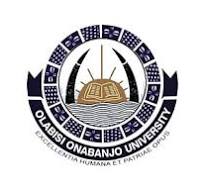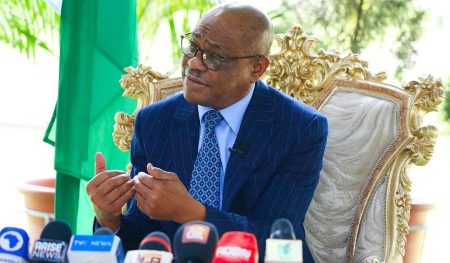The Olabisi Onabanjo University (OOU) found itself embroiled in controversy following a viral video depicting female students undergoing bra checks before entering an examination hall. The footage, which quickly spread across social media platforms, ignited a firestorm of criticism directed at the university’s administration for what many perceived as an invasive and humiliating practice. The video showcased a queue of female students at the university’s main campus, subjected to inspections by unidentified officials seemingly verifying the presence of bras before granting access to a computer-based test venue. This incident sparked outrage and condemnation online, with commentators labeling the practice as harassment and a misguided focus on trivial matters over academic integrity.
Student testimonies corroborated the video’s depiction, revealing that bra checks were a recurring practice, particularly during examination periods. While some students expressed resignation to this routine, others voiced their frustration and embarrassment at the manner in which the checks were conducted. One student, speaking anonymously, confirmed that the checks were not a daily occurrence but emphasized their frequency during exams. Another student, identified as Chioma, criticized the perceived overreach of security personnel on campus, citing instances of students being targeted for wearing slippers, shorts, and now, the absence of bras. She expressed hope that the viral nature of the incident would compel the university to reconsider its policies.
The university’s Student Union Government (SUG) responded to the growing outcry, with President Muizz Olatunji releasing a statement acknowledging the concerns. Olatunji stated that the union had engaged with the university management to explore alternative approaches to addressing indecent dressing, emphasizing the importance of respectful and dignified interactions between students and staff. While acknowledging the longstanding nature of the dress code policy, Olatunji sought to clarify that the “no bra, no entry” stance was not a new regulation but an existing component of the institution’s code of conduct. He simultaneously encouraged female students to adhere to modest dressing standards, reiterating the university’s commitment to maintaining a respectful and distraction-free learning environment.
Despite the SUG’s attempts to contextualize the situation, the university continued to face widespread backlash for its enforcement methods. Social media platforms became a breeding ground for criticism, with users expressing their disapproval and ridicule. Many condemned the university’s priorities, arguing that the focus on bras rather than academic performance reflected a misplaced emphasis. The incident raised questions about the appropriateness of such checks, with some users querying the necessity of physically verifying the presence of undergarments. Others highlighted the hypocrisy of enforcing strict dress codes while allegedly ignoring more serious issues, such as sexual harassment and bribery within the institution.
The incident ignited a wider debate about dress codes in educational institutions, with many arguing against such stringent regulations. Critics contended that dress codes often disproportionately target female students and perpetuate harmful stereotypes. They emphasized the importance of creating inclusive learning environments that respect individual expression and prioritize academic achievement over superficial aspects of appearance. The controversy surrounding OOU’s bra checks highlighted the tension between institutional policies and student autonomy, raising questions about the extent to which universities can regulate student attire and behavior.
The OOU bra check controversy serves as a microcosm of broader societal debates surrounding gender, dress codes, and institutional authority. The incident underscored the need for open dialogue and a reevaluation of policies that may be perceived as discriminatory or intrusive. The widespread criticism faced by the university highlights the increasing scrutiny placed on institutions to adopt inclusive and respectful practices. The incident also exemplified the power of social media in amplifying marginalized voices and holding institutions accountable for their actions. The conversation surrounding this event likely spurred further discussions on the balance between maintaining order and upholding individual freedoms within educational settings.














